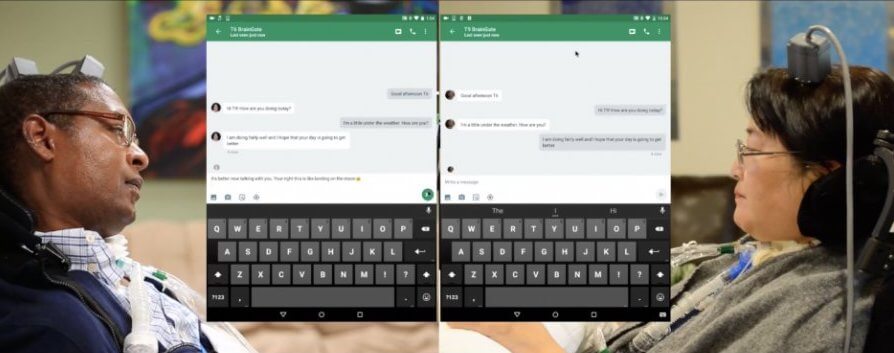Brain-Computer interface to help people with paralysis
Researchers have developed a Brain-Computer Interface to help the people with paralysis to operate a tablet device.
Tablets, mobiles, and other similar devices have been part of human life for quite some time now. However, using them with paralysis can be very difficult. A new research conducted by the BrainGate consortium has shown that a brain-computer interface (BCI) can allow the people with paralysis to operate a regular tablet device just by thinking about movements of the cursor and making clicks.
A research study was published on November 21 in PLOS ONE. During the research, three medical trial participants with tetraplegia managed to work through normally used tablet programs, together with email, chatting, music-streaming, and video-sharing apps. Each of the three participants was using the new BrainGate BCI that recognizes and records neural activity straight from a small sensor positioned in the motor cortex.
The participants exchanged messages with each other, with their family, friends, and research team members. They also surfed through the internet, checked the weather and did some online shopping. One of the three participants who was a musician played a piece of Beethoven’s ‘Ode to Joy’ on a digital piano.
What happened in the research?
The investigational BrainGate BCI comprises a baby aspirin-sized implant that perceives the signals connected with planned movements formed in the brain’s motor cortex. Those signals are then interpreted and transmitted to external devices.
This study was conducted with the association of scientists, physicians, and engineers from Stanford University, Brown University’s Carney Institute for Brain Science, Massachusetts General Hospital (MGH), and the Providence Veterans Affairs Medical Center (PVAMC).
Dr. Jaimie Henderson, a senior author of the paper and a neurosurgeon at Stanford University neurosurgeon, said that the BrainGate collaboration has been working on developing the neuroscience and neuro-engineering elements for years to allow the people who have lost their motor capabilities to operate external devices simply by envisioning about the movements of their hands.
The outcomes of the study showed that as the participants used a variety of apps, they managed to make up to 22 point-and-click selections every minute.
Using the text apps, the participants typed up to 30 effective characters every minute with the help of regular email and text interfaces.
The researcher team was very happy to see the way participants responded and how quickly they were able to use the tablet interface to discover their interests and hobbies.
Dr. Paul Nuyujukian, a bioengineer at Stanford and the lead author of this study, said that it was satisfying to see the participants performing the tasks and do whatever they wanted to do, using apps for online shopping, watching videos, and chatting with friends. Dr. Paul also added that one of the participants wanted to play music, and she did a fantastic job using a digital keyboard.
The researchers believe that the study can really open vital new lines of communication between patients suffering from severe neurological issues and their health specialists.
Image credit: www.braingate.org

















